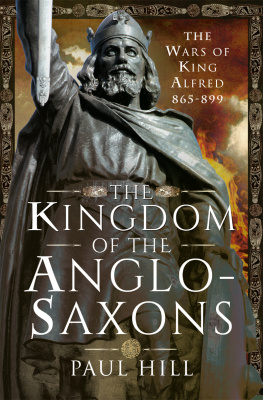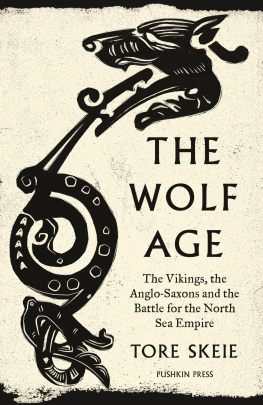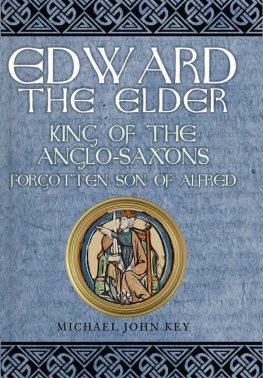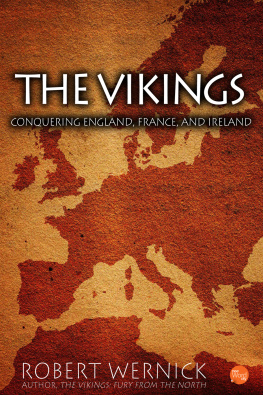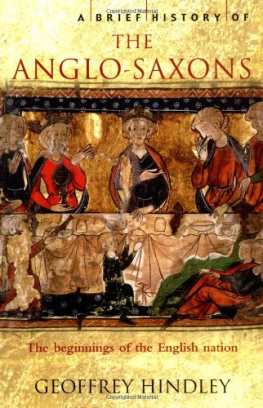Copyright 2017 by Ed West
All rights reserved. No part of this book may be reproduced in any manner without the express written consent of the publisher, except in the case of brief excerpts in critical reviews or articles. All inquiries should be addressed to Skyhorse Publishing, 307 West 36th Street, 11th Floor, New York, NY 10018.
Skyhorse Publishing books may be purchased in bulk at special discounts for sales promotion, corporate gifts, fund-raising, or educational purposes. Special editions can also be created to specifications. For details, contact the Special Sales Department, Skyhorse Publishing, 307 West 36th Street, 11th Floor, New York, NY 10018 or .
Skyhorse and Skyhorse Publishing are registered trademarks of Skyhorse Publishing, Inc., a Delaware corporation.
Visit our website at www.skyhorsepublishing.com.
10 9 8 7 6 5 4 3 2 1
Library of Congress Cataloging-in-Publication Data is available on file.
Cover design by Rain Saukas
Print ISBN: 978-1-5107-1985-9
Ebook ISBN: 978-1-5107-1990-3
Printed in the United States of America
Contents
Introduction
T he Vikings first set foot in England in the year 787 near Portland on the south coast, in what was then the kingdom of Wessex. As they came ashore, a local official called Beaduheard walked up to their leader and explained that under government regulations they had to pay docking duties. The chief Viking put an axe through his head. Or, as the Anglo-Saxon Chronicle reported, the reeve rode thither and tried to compel them to go to the royal manor, for he did not know what they were; and then they slew him. Community relations were off to a tricky start.
It was the first of many such cultural misunderstandings: six years later, the Vikings attacked the holy island of Lindisfarne in the northern kingdom of Northumbria, killing a number of monks and taking the others off to a presumably grim life of slavery. The Lindisfarne massacre took place on June 8, 793, the feast day of Medard, patron saint of toothaches and the weather, and followed some bad omens of comets, whirlwinds, and fiery dragons seen in the sky. It was said in Europe that bad weather on St. Medards Day would result in weeks of the same, so it was considered a terrible omen for the heathens to attack; worse still, earlier in 793, people in York had seen blood dripping from the roof of St. Peters church.
The Portland reeve and his new Viking friends, who were probably from Horthaland or Hardanger Ford in Norway, would have been able to understand each other because the Anglo-Saxons were themselves pagan invaders from Scandinavia only three and a half centuries earlier, and the native Britons had then viewed their arrival with a similar lack of enthusiasm.
Although the Vikings soon disappeared from the coast of England for a few decades, the raiders returned in the 830s and the number of attacks increased as the ninth century dragged on, so that by the year 871 three of Englands four kingdoms had been conquered; the last, Wessex, was poised to collapse as large Danish armies overwhelmed far smaller and less organized groups of natives. It was at this point that fate pushed forward a man who would shape an entire nations history.
England may have never come to exist were it not for this one man, and it is with good reason that Alfred is the only English king to be known as the Great.
Whats more surprising is that Alfred, the fifth and youngest son of King Ethelwulf, was a sickly and neurotic individual who comes across almost as a Woody Allen figure thrown into the horror of early medieval battle, forced to flee from these marauding Nordic maniacs. As he wrote much later in his translation of the Roman book On the Consolation of Philosophy , the greatness of this earthly power never will please me, nor did I altogether very much yearn after this earthly authority. He would much rather have been a scholar stuck in a monastery reading the Bible and making beer.
After coming to the throne, Alfred would spend the next seven years on the run, eventually living out in a swamp, and on several occasions was almost capturedand considering that two of the other English kings in the past decade had been tortured to death, it was not an attractive prospect. He also had an extremely painful chronic stomach condition throughout his adult life, as if life wasnt terrible enough. Yet by the time he died, in 899, Wessex was safe, half of the neighboring kingdom of Mercia had been taken back from the Vikings, the derelict Roman city of London was rebuilt, and Alfreds family were well on the way to conquering all of England. His grandson Athelstan would finish the job twenty-eight years later, uniting the country under borders that remain roughly the same today. By the end of the millennium, Englalond was perhaps the most sophisticated society in western Europe, with the currency it still has today, the beginnings of a jury system, and a flourishing, highly literate Church.
It was a far cry from its origins a few centuries earlier, during a period usually called the Dark Ages.
C HAPTER O NE
Rome Answers the Prayers of the Britons. No, Says Rome
T he groans of the Britons The barbarians drive us to the sea, the sea drives us to the barbarians; between these two means of death, we are either killed or drowned. So wrote the leaders of the province of Britannia in their final appeal to the Romans around the middle of the fifth century.
This message was recorded by Gildas, a depressive sixth-century British monk who chronicled the collapse of the country in his rather downbeat book (as hinted at by its title) The Ruin and Conquest of Britain. The barbarians he spoke of were raiders from across the North Sea, whom Gildas would have called Saesneg or Garman (Germans) but have become known to us as Anglo-Saxons. The first chapter in the history of England begins with these invaders who, three and a half-centuries later, faced the same fate themselves at the hands of a new wave of scary barbarians.
The story behind the Saxon and Viking invasions is told in The Anglo-Saxon Chronicle , one of two works commissioned by King Alfred in the ninth century, the other being a biography written by a Welsh monk called Asser. Both books painted Alfred rather heroically, but even taking aside any bias, we know that when he came to power Anglo-Saxon England was almost finished, and when he died Alfred had established a dynasty whose descendants still rule England today. In creating laws and in bringing the country under the influence of the Latin cultural world, he also set the ground for the English political and legal system.
Asser was a Welsh monk hired by Alfred during a relatively peaceful period of his rule, which was otherwise mainly characterized by Viking attacks. Assers biography begins in the biblical style by explaining the kings descent: Alfred was the son of King Ethelwulf of Wessex, who was son of King Egbert, and so on, going back to the earliest rulers of the kingdom, a line which starts with the semi-mythical Cerdic in the sixth century. Cerdic, although his existence is somewhat doubted, was said to be the founder of the Kingdom of the West Saxons, sailing over from Germany and arriving in Hampshire in 495. Through Cerdic, Asser traced Alfreds line back to Woden and Geat and various other mythical Germanic figures on the continent, before the family tree inexplicably joins up to the Biblical line of Seth and Noah and all the way back to Adam.





